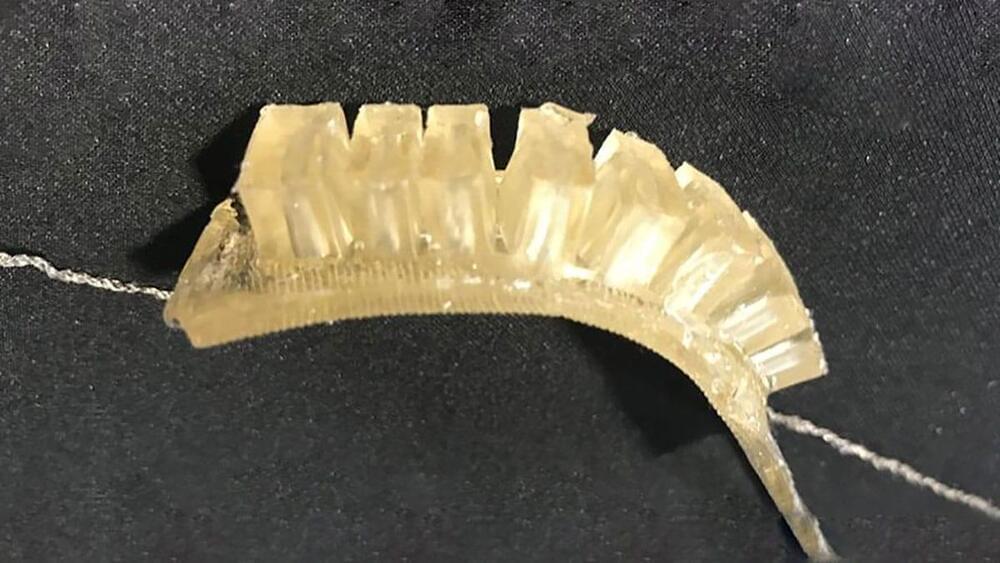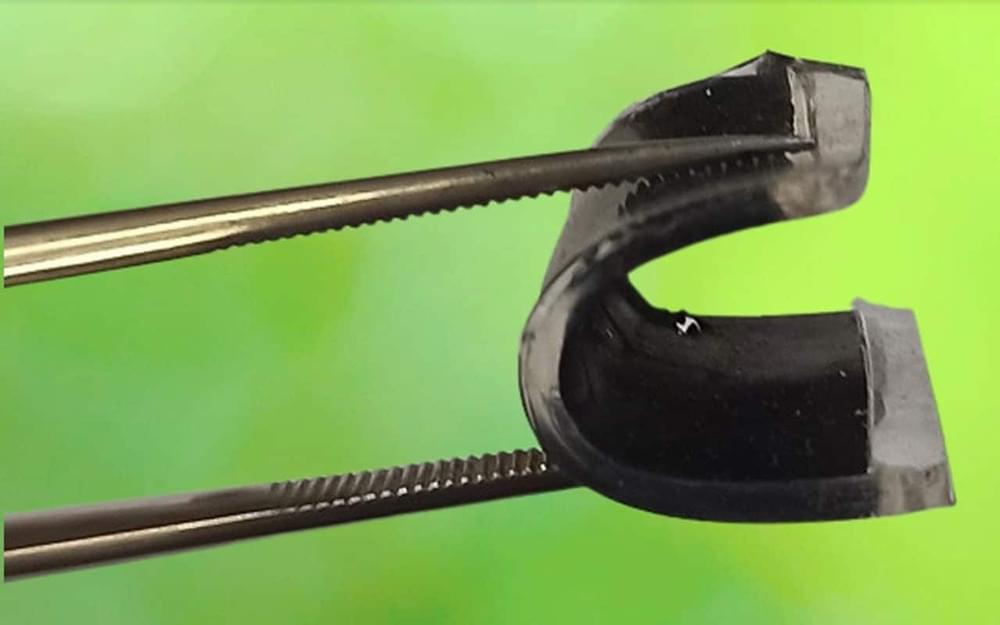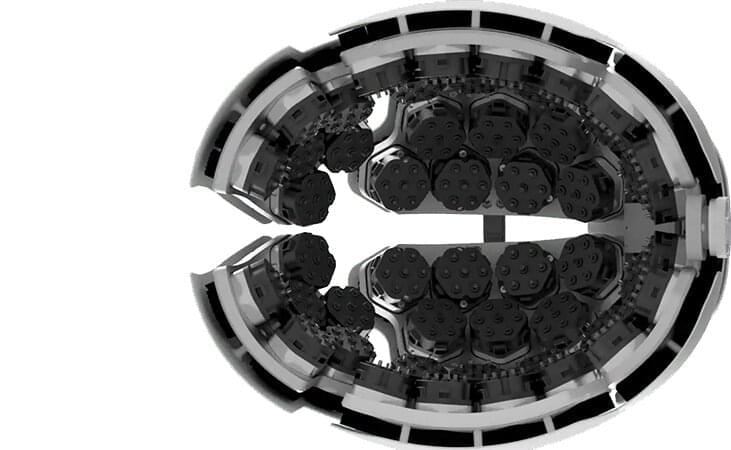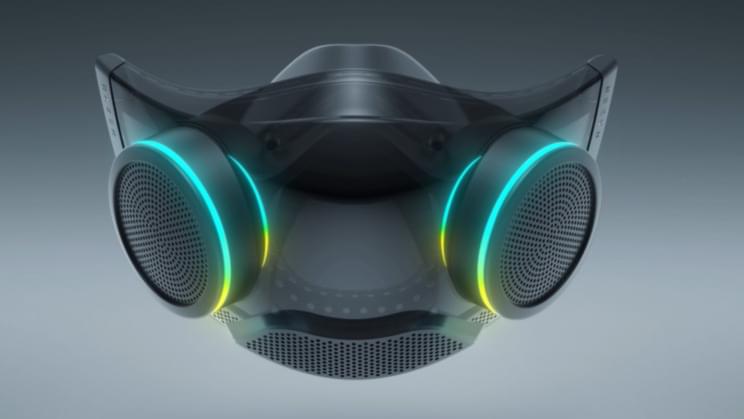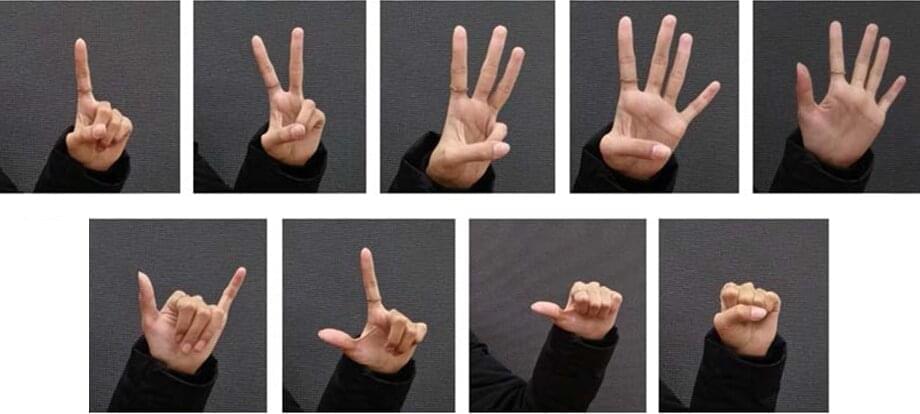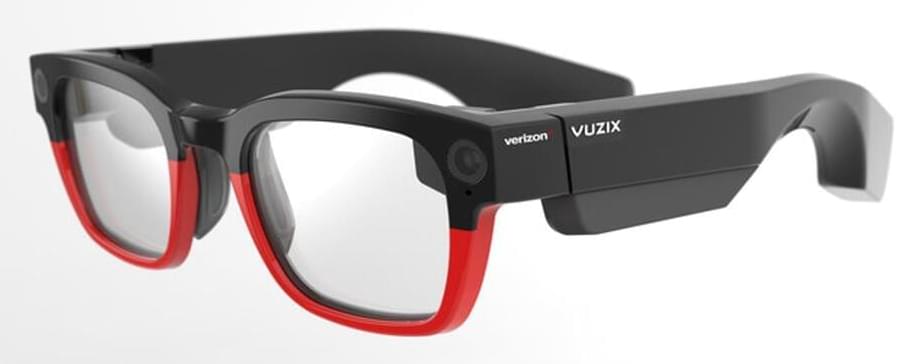Archive for the ‘wearables’ category: Page 32
Feb 19, 2022
Low-cost self-healing material for robotic hands and arms
Posted by Shubham Ghosh Roy in categories: robotics/AI, sustainability, wearables
Soft sensing technologies have the potential to revolutionize wearable devices, haptic interfaces, and robotic systems. However, most soft sensing technologies aren’t durable and consume high amounts of energy.
Now, researchers at the University of Cambridge have developed self-healing, biodegradable, 3D-printed materials that could be used in the development of realistic artificial hands and other soft robotics applications. The low-cost jelly-like materials can sense strain, temperature, and humidity. And unlike earlier self-healing robots, they can also partially repair themselves at room temperature.
“Incorporating soft sensors into robotics allows us to get a lot more information from them, like how strain on our muscles allows our brains to get information about the state of our bodies,” said David Hardman from Cambridge’s Department of Engineering the paper’s first author.
Feb 11, 2022
New flexible supercapacitor could boost the lifespan of wearables
Posted by Liliana Alfair in categories: energy, internet, nanotechnology, wearables
A team of researchers from the University of Surrey’s Advanced Technology Institute (ATI) and the Federal University of Pelotas (UFPel), Brazil, has developed a new type of supercapacitor that can be integrated into footwear or clothing, an advance with applications in wearables and IoT (Internet of Things) devices.
A supercapacitor is an electricity storage device, similar to a battery, but it stores and releases electricity much faster.
The researchers have devised a novel method for the development of flexible supercapacitors based on carbon nanomaterials. The new method, which is cheaper and less time-consuming to fabricate, involves transferring aligned carbon nanotube (CNT) arrays from a silicon wafer to a polydimethylsiloxane (PDMS) matrix. This is then coated in a material called polyaniline (PANI), which stores energy through a mechanism known as pseudocapacitance, offering outstanding energy storage properties with exceptional mechanical integrity.
Jan 31, 2022
Wearable Synthetic Skin for Virtual Reality
Posted by Jose Ruben Rodriguez Fuentes in categories: robotics/AI, transhumanism, virtual reality, wearables
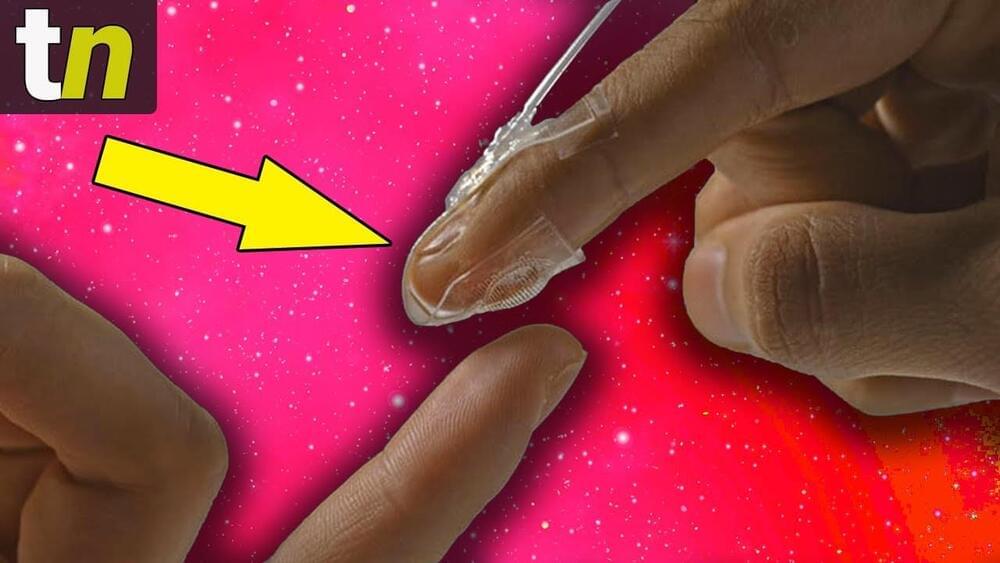
Parents Use AI To See One Last Message From Their Deceased Son ‘…what’s to keep me from showing face, Man?’
Feel Virtual Reality In Mid-Air! ‘…a pressure on the lips — warm and soft, moist and sweet.’ — Frederick Pohl, 1965.
Continue reading “Wearable Synthetic Skin for Virtual Reality” »
Jan 28, 2022
Scientists Regrow Frog’s Lost Leg With a Five-Drug Cocktail
Posted by Genevieve Klien in categories: biotech/medical, life extension, wearables
Frogs briefly treated with a five-drug cocktail administered by a wearable bioreactor on the stump were able to regrow a functional, nearly complete limb.
For millions of patients who have lost limbs for reasons ranging from diabetes to trauma, the possibility of regaining function through natural regeneration remains out of reach. Regrowth of legs and arms remains the province of salamanders and superheroes.
But in a study published in the journal Science Advances, scientists at Tufts University and Harvard University’s Wyss Institute have brought us a step closer to the goal of regenerative medicine.
Jan 27, 2022
Scientists regrow frog’s missing leg
Posted by Future Timeline in categories: biotech/medical, wearables
For millions of patients who have lost limbs – for reasons ranging from diabetes to trauma – the possibility of regaining function through natural regeneration remains out of reach. The regrowth of legs and arms remains limited to animals such as salamanders and the realm of science fiction.
However, a new study published in the journal Science Advances, by scientists at Tufts University and Harvard University’s Wyss Institute, has brought us a step closer to the goal of regenerating human limbs.
On adult frogs, which are naturally unable to regenerate limbs, a research team succeeded in triggering regrowth of a lost leg using a five-drug cocktail applied in a silicone wearable bioreactor dome that seals over the stump for just 24 hours. That brief treatment sets in motion an 18-month period of regrowth that eventually restores a functional leg.
Jan 21, 2022
Kernel Flow: A wearable device for noninvasive optical brain imaging
Posted by Dan Kummer in categories: biotech/medical, neuroscience, wearables
Recent advances in brain imaging techniques facilitate accurate, high-resolution observations of the brain and its functions. For example, functional near-infrared spectroscopy (fNIRS) is a widely used noninvasive imaging technique that employs near-infrared light (wavelength 700 nm) to determine the relative concentration of hemoglobin in the brain, via differences in the light absorption patterns of hemoglobin.
Most noninvasive brain scanning systems use continuous-wave fNIRS, where the tissue is irradiated by a constant stream of photons. However, these systems cannot differentiate between scattered and absorbed photons. A recent advancement to this technique is time-domain (TD)-fNIRS, which uses picosecond pulses of light and fast detectors to estimate photon scattering and absorption in tissues. However, such systems are expensive and complex and have a large form factor, limiting their widespread adoption.
To overcome these challenges, researchers from Kernel, a neurotechnology company, have developed a wearable headset based on TD-fNIRS technology. This device, called “Kernel Flow,” weighs 2.05 kg and contains 52 modules arranged in four plates that fit on either side of the head. The specifications and performance of the Kernel Flow system are reported in the Journal of Biomedical Optics (JBO).
Jan 6, 2022
Razer Just Unveiled Its New Mask. With a Microphone and Speakers?
Posted by Gemechu Taye in categories: biotech/medical, wearables
Switch your disposable masks with Zephyr.
If you think your voice has been dulled by wearing masks in this pandemic, then electronics company Razer has the product for you. Zephyr Pro is a wearable mask that has a voice amplification feature in addition to built-in speakers.
In January last year, Razer had unveiled the initial concept and called it Hazel. A year later, it is now Zephyr and Razer already has a Pro version of the product. At first glance, the Zephyr Pro does… See more.
Dec 29, 2021
Simple, accurate, and efficient: Improving the way computers recognize hand gestures
Posted by Chima Wisdom in categories: information science, mobile phones, robotics/AI, wearables
In the 2002 science fiction blockbuster film “Minority Report,” Tom Cruise’s character John Anderton uses his hands, sheathed in special gloves, to interface with his wall-sized transparent computer screen. The computer recognizes his gestures to enlarge, zoom in, and swipe away. Although this futuristic vision for computer-human interaction is now 20 years old, today’s humans still interface with computers by using a mouse, keyboard, remote control, or small touch screen. However, much effort has been devoted by researchers to unlock more natural forms of communication without requiring contact between the user and the device. Voice commands are a prominent example that have found their way into modern smartphones and virtual assistants, letting us interact and control devices through speech.
Hand gestures constitute another important mode of human communication that could be adopted for human-computer interactions. Recent progress in camera systems, image analysis and machine learning have made optical-based gesture recognition a more attractive option in most contexts than approaches relying on wearable sensors or data gloves, as used by Anderton in “Minority Report.” However, current methods are hindered by a variety of limitations, including high computational complexity, low speed, poor accuracy, or a low number of recognizable gestures. To tackle these issues, a team led by Zhiyi Yu of Sun Yat-sen University, China, recently developed a new hand gesture recognition algorithm that strikes a good balance between complexity, accuracy, and applicability.
Dec 28, 2021
Verizon partners with AR hardware maker Vuzix for some reason
Posted by Shubham Ghosh Roy in categories: augmented reality, internet, wearables
It’s been a few years since we’ve heard from AR company Vuzix. In early 2019, it came out with its first pair of. After staying relatively quiet over the past two years, it’s now partnering with Verizon. The two didn’t share many details about their collaboration. What they did say is that they plan to find ways to commercialize AR technology for use in sports and gaming scenarios, especially those involving the need for training. The partnership will combine Vuzix’s new Shield smart glasses and the capabilities of Verizon’s 5G network.
It’s hard to say if we’ll see anything impactful come out of this agreement, but it’s not a surprise to see Verizon. Augmented, virtual and mixed reality wearables have been consistently positioned as one of the primary beneficiaries of the speed and latency enhancements promised by 5G networks. Likewise, the focus on gaming and sports isn’t surprising either. Some of the earliest locations where Verizon had 5G service was in. They’re one of few places where the carrier’s mmWave deployments shine since there’s enough density there to justify building out all the small cells required to blanket even a small area with ultrafast 5G coverage.

